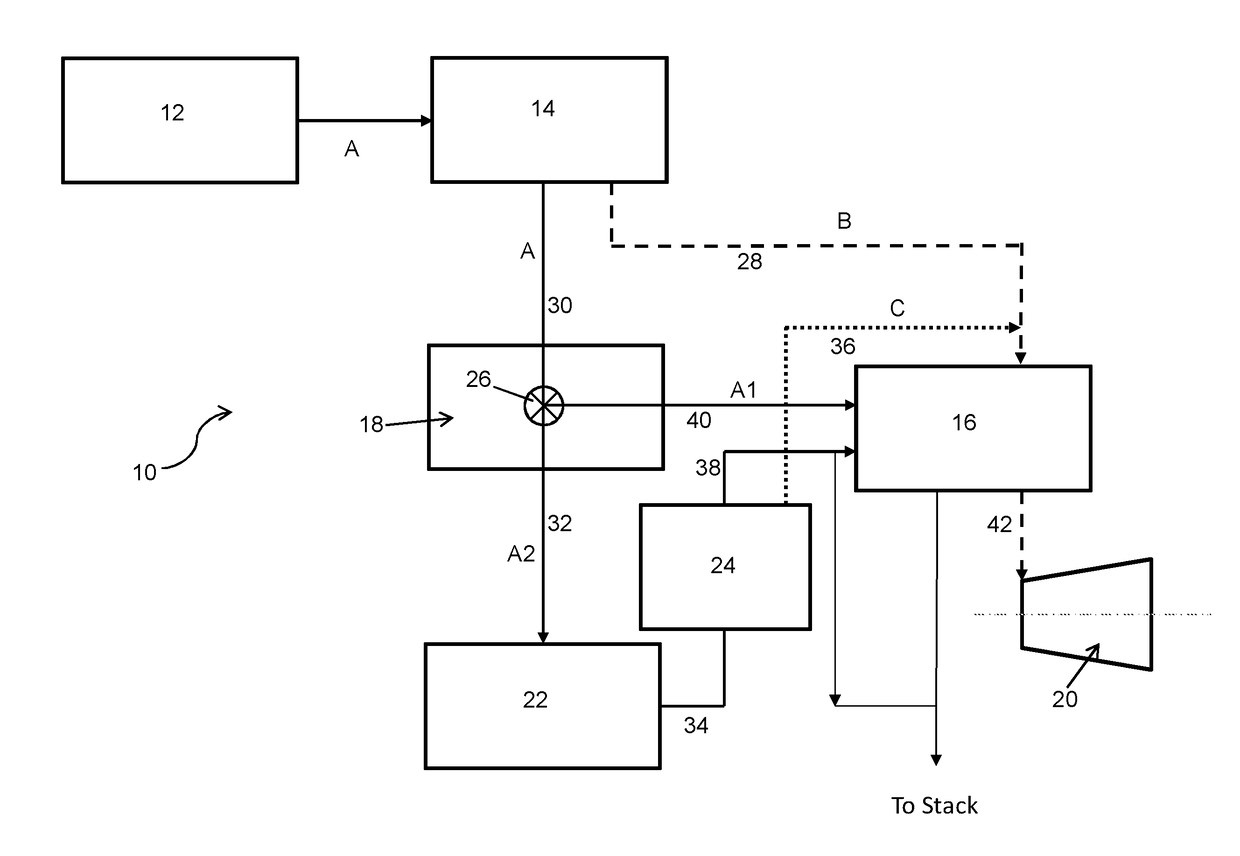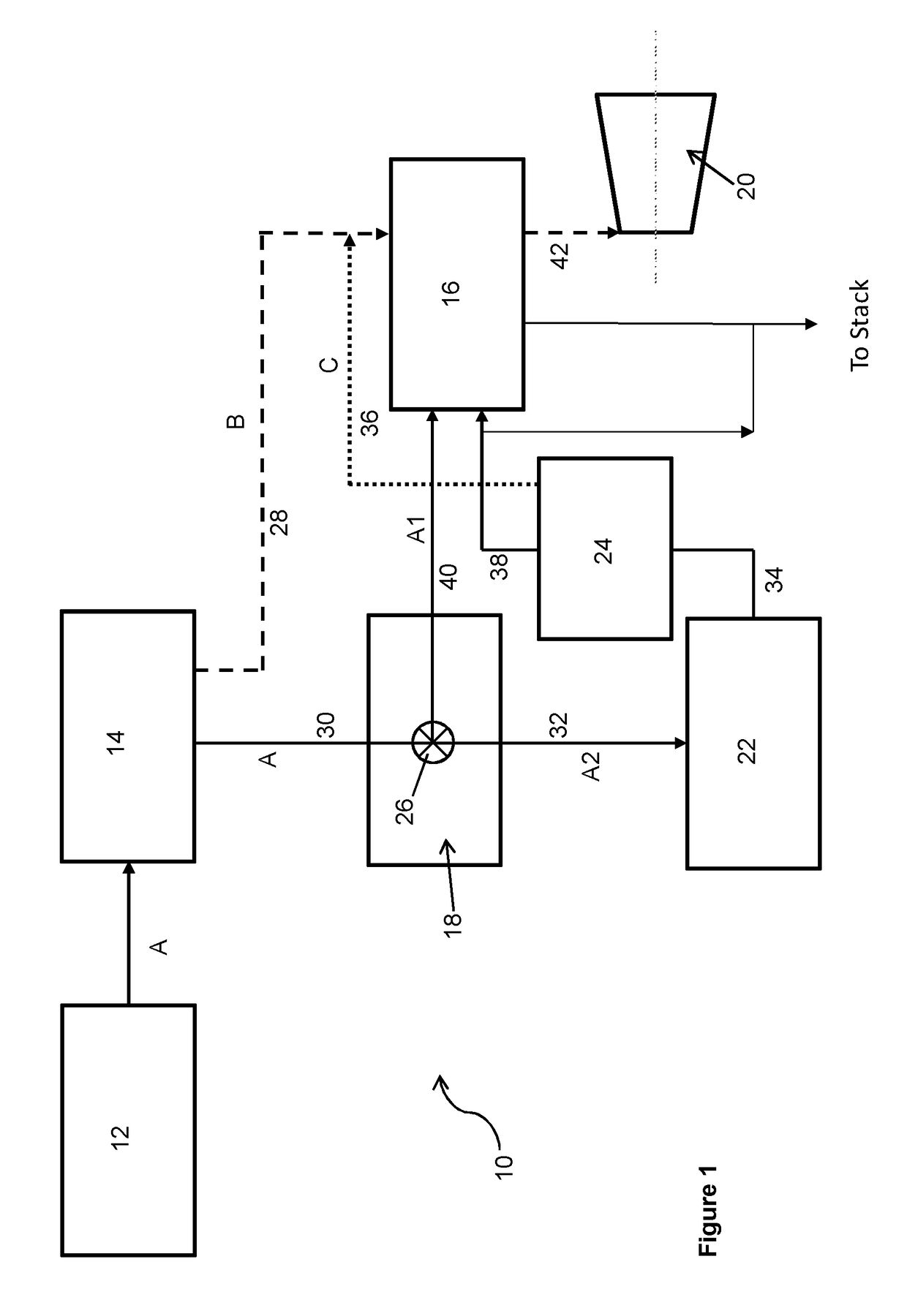Waste Management
a technology of waste management and waste, applied in the direction of steam superheaters, dynamo-electric machines, steam generation using hot heat carriers, etc., can solve the problems of low efficiency of turbines driven by low temperature, increased maintenance and shutdown time, and reduced heat recovery efficiency and overall plant efficiency
- Summary
- Abstract
- Description
- Claims
- Application Information
AI Technical Summary
Benefits of technology
Problems solved by technology
Method used
Image
Examples
Embodiment Construction
[0064]Embodiments of the invention will now be described with reference to the accompanying Figure in which is a schematic diagram of a waste gas management system in accordance with an embodiment of the present invention.
[0065]With reference to FIG. 1, a waste gas management system 10 comprises a gasification or pyrolysis unit 12, a first heat recovery boiler 14, a second boiler 16, a cleaning apparatus 18, and a steam turbine 20. The system 10 additionally comprises a power generation plant 22 and a third boiler 24, all being connected by conduits defining the various flowpaths.
[0066]A first flow path A for the transfer of gas is provided from the gasification unit 12, through the first boiler 14 and on to the cleaning apparatus 18. At this point the flow path A branches into a first branch A1, which leads directly to the second boiler 16, and a second branch A2 which leads to the second boiler 16 via the power generation plant 22 and the third boiler 24. A computer controlled val...
PUM
 Login to View More
Login to View More Abstract
Description
Claims
Application Information
 Login to View More
Login to View More - R&D
- Intellectual Property
- Life Sciences
- Materials
- Tech Scout
- Unparalleled Data Quality
- Higher Quality Content
- 60% Fewer Hallucinations
Browse by: Latest US Patents, China's latest patents, Technical Efficacy Thesaurus, Application Domain, Technology Topic, Popular Technical Reports.
© 2025 PatSnap. All rights reserved.Legal|Privacy policy|Modern Slavery Act Transparency Statement|Sitemap|About US| Contact US: help@patsnap.com


